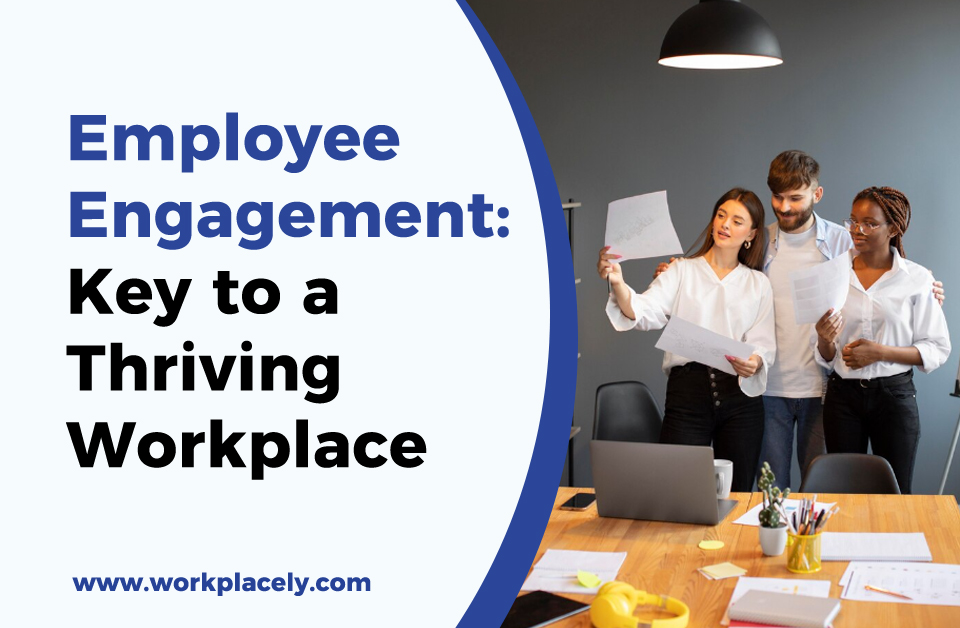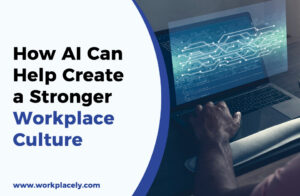In modern workplaces, employee engagement stands as a cornerstone, defining the success and vibrancy of organizations. It transcends mere job satisfaction, encapsulating a profound connection between employees and the company’s mission.
This article looks into the multifaceted aspects of employee engagement, unraveling strategies that elevate workplace satisfaction and contribute to a company’s broader success.
Let’s embark on a journey to understand the pivotal role of company culture, the interconnectedness of employee satisfaction and engagement, the profound meaning behind DEIB (Diversity, Equity, Inclusion, and Belonging), and the transformative impact of employer branding.
1. Cultivating a Positive Company Culture
Nurturing a Positive Company Culture
Company culture is the underpinning of employee engagement. It encompasses shared values, beliefs, and behaviors that define the work environment. Positive cultures go beyond superficial perks, fostering employees’ sense of belonging and purpose.
In the tapestry of workplace dynamics, positive company culture is the vibrant thread woven through every interaction, fostering an environment where every employee feels valued and motivated to contribute.
Creating a Culture of Belonging
Crafting an environment where every employee feels integral to a shared vision is crucial. It involves recognizing and celebrating diverse perspectives and experiences.
Beyond the policies and procedures, creating a culture of belonging is an intentional act that nurtures a sense of community where each employee’s uniqueness is acknowledged and embraced.
2. Satisfying Employees for Enhanced Engagement

The Role of Employee Satisfaction
Satisfaction is the foundation upon which engagement is built. Satisfied employees are more likely to invest in their roles, increasing motivation and productivity.
Employee satisfaction acts as the cornerstone of a thriving workplace. When employees find fulfillment and contentment in their roles, they naturally become more engaged, contributing positively to the organizational ecosystem.
Organizations can foster satisfaction through transparent communication, ensuring employees understand their value and impact. Moreover, providing avenues for skill development and career advancement contributes to a sense of professional fulfillment.
Recognition plays a pivotal role in employee satisfaction. Regular acknowledgment of individual and collective achievements reinforces the idea that contributions are not only noticed but also integral to the company’s success.
A Multifaceted Approach to Satisfaction
Employee satisfaction involves fair compensation, opportunities for growth, and a workplace where individuals feel their contributions are acknowledged and valued.
Taking a holistic approach to satisfaction goes beyond salary figures. It encompasses a spectrum of factors—from professional development opportunities to a culture of recognition—creating an environment where employees feel content and are inspired to give their best.
A fair compensation structure is fundamental, aligning employee efforts with due recognition. Beyond financial rewards, offering avenues for skill enhancement and career progression adds layers to job satisfaction, creating a workplace where individuals are motivated to stay and grow.
Moreover, employee satisfaction is intertwined with a sense of belonging. Cultivating a workplace where diverse perspectives are valued ensures every team member feels acknowledged and appreciated.
3. Fostering Inclusivity and Belonging Through DEIB
Understanding DEIB
Diversity, Equity, Inclusion, and Belonging (DEIB) have become crucial elements in the employee engagement landscape. It’s about recognizing and celebrating differences, ensuring equitable opportunities, and fostering a workplace where every employee feels they belong.
In today’s workplaces, DEIB is not merely a set of initiatives but a fundamental ethos shaping organizational cultures. Recognizing and appreciating diversity is the starting point—celebrating unique perspectives, backgrounds, and experiences that individuals bring to the collective table.
Equity within the DEIB framework ensures that opportunities are distributed fairly. It’s a proactive approach to identify and rectify systemic biases that might hinder certain groups. By fostering an equitable environment, organizations set the stage for enhanced engagement where every employee sees a clear and unbiased path to growth.
Inclusion is the active embrace of diversity. It involves creating an environment where every voice is heard, every contribution is valued, and everyone feels a sense of belonging. Inclusion is not a passive state; it’s a conscious effort to weave diversity into the fabric of the organizational culture.
DEIB as a Fundamental Shift
In the context of employee engagement, DEIB involves:
· Dismantling barriers.
· Providing equal access to opportunities.
· Fostering a workplace where every employee feels they belong.
DEIB represents a fundamental shift in how organizations approach employee engagement. It acknowledges that more than a one-size-fits-all approach is needed, recognizing each employee’s unique needs and aspirations.
Breaking down barriers is a key aspect of DEIB. It could involve reevaluating traditional hiring practices, ensuring unbiased promotional opportunities, and creating an environment where individuals from all backgrounds feel valued.
Moreover, DEIB is not just a set of policies; it’s a cultural transformation. It requires ongoing efforts to embed diversity, equity, and inclusion into the daily fabric of organizational life. When embraced authentically, this shift creates a workplace where employees don’t just work; they thrive.
4. Shaping Perceptions Through Employer Branding

The Impact of Employer Branding
Employer branding shapes how a company is perceived by its employees and potential hires. A strong employer brand attracts talent and contributes to employee engagement by creating a positive workplace reputation.
In the competitive talent landscape, employer branding acts as a powerful magnet. It goes beyond the traditional view of a company and becomes a narrative—a story that attracts those who resonate with its ethos. This magnetic pull brings in new talent and retains existing employees who align with the company’s values.
Moreover, the impact of employer branding on engagement is profound. When employees are proud to be associated with their employer, it creates a positive feedback loop. They become ambassadors, not just workers. This sense of pride and identification with the brand fuels a deeper level of engagement.
Aligning External Perceptions with Internal Reality
Employer branding for engagement involves showcasing not just the perks but the values, the work culture, and the tangible impact employees can have.
Authenticity is the cornerstone of effective employer branding. It’s not just about creating an appealing facade; it’s about aligning external perceptions with internal reality. When the external brand aligns with the employee experience, it builds trust.
For instance, if a company promotes a collaborative work culture in its branding but employees experience a hierarchical and siloed environment, there must be a connection. This misalignment can erode trust and negatively impact engagement. On the other hand, when the branding accurately reflects the workplace reality, it becomes a powerful tool for attracting those who resonate with the true essence of the organization.
Final Word: Crafting a Prosperous Future Through Engagement
In the grand tapestry of organizational success, employee engagement is the vibrant thread that weaves through every aspect. It’s a commitment to creating a workplace and a community where individuals thrive, contribute meaningfully, and find fulfillment in their professional journey.
Most Loved Workplaces serve as examples of how top companies prioritize engagement. These organizations stand as beacons in diverse industries, showcasing that employee engagement is not a one-size-fits-all concept.
As organizations navigate the complexities of the modern workplace, recognizing the significance of employee engagement strategies becomes paramount. It’s not just an HR buzzword; it’s a strategic imperative. The interplay between company culture, employee satisfaction, DEIB principles, and employer branding creates a harmonious ecosystem where employees are assets and active contributors to a thriving, innovative, and sustainable workplace.




